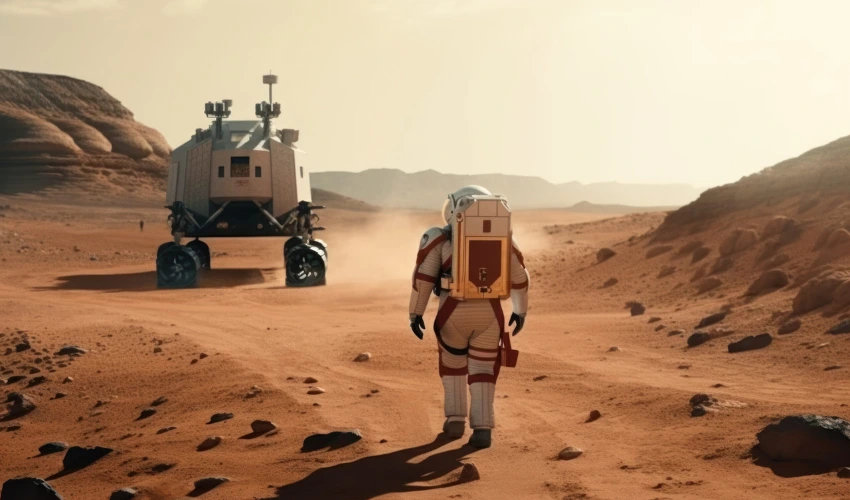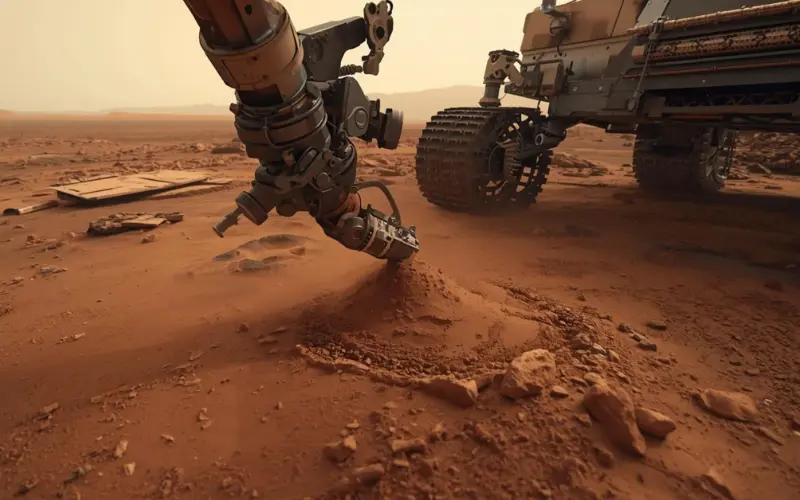

Mars mining presents a wealth of opportunities, but significant technological challenges must be addressed to make resource extraction feasible. These challenges span infrastructure, energy supply, automation, safety, and environmental adaptation. Some of these challenges require a large number of economic resources, while others are potential resources that have not been extensively researched by scientists.
One of the major technological difficulties is building an Infrastructure capable of withstanding the harsh atmosphere
presented by the red planet. Building robust infrastructure as base stations capable of enduring Mars’ extreme temperatures, dust storms, and low atmospheric pressure is a major challenge. Materials must be lightweight for transport yet durable enough to withstand Martian conditions. Moreover, the Transportation of Equipment is significant yet tough as well. Transporting mining machinery and setting it up on Mars is costly and complicated. Modular and lightweight equipment is necessary, with considerations for in-situ assembly.
The next obstacle is Power Generation and Storage on the surface of Mars. Mining operations require consistent power, but Mars’ solar power supply is intermittent due to its distance from the Sun and frequent dust storms. Solar Energy, while performing reliably on Earth cannot bring the same result on Mars. Alternatives like nuclear energy or advanced solar technology need development. Additionally, Efficient energy storage solutions, such as high-capacity batteries or fuel cells, are required to maintain operations during power interruptions caused by the Martian environment.
Thirdly, automation and robotics play a huge role in conducting extractions on Mars, especially since humans have never even stepped foot on the red planet. This means the introduction of Autonomous Mining Operations on Mars. Given the delay in communication between Earth and Mars (~20 minutes one-way), mining equipment must operate autonomously. Developing reliable AI and robotic systems capable of decision-making, navigation, and maintenance is crucial, and solving this time delay in providing instructions is of the utmost importance. They also present several Maintenance Challenges, where dust accumulation and harsh conditions can degrade machinery quickly. Robots must be capable of self-repairing or diagnosing issues without human intervention for a long time.

Then, Resource Extraction Techniques should also be adapted to work in the Martian Environment, especially the Mars Regolith. The properties of Martian regolith, including its high iron oxide content and abrasiveness, can wear down mining equipment. Tools need to be adapted for efficient and long-lasting operation in this environment. Moreover, a key aspect of techniques is Material Processing. Extracting resources such as metals, water, and oxygen from raw Martian material requires technologies like electrolysis, sintering, and chemical processing. Scaling these methods for industrial use poses challenges.
Mining on Mars also brings Safety and Environmental Concerns to Human Safety. For manned mining operations, ensuring crew safety is paramount. Mining must account for radiation exposure, low
gravity, and toxic materials such as perchlorates in Martian soil. Mining can alter the delicate Martian environment, potentially raising questions about preserving its natural state and harming humanity’s extraterrestrial ventures on Mars in
the future. Moreover, While using resources directly on Mars (in-situ resource utilization or ISRU) minimizes transportation needs, exporting valuable resources back to Earth remains challenging. Launching materials into orbit requires advanced propulsion systems and significant energy.
Mars’ extreme temperatures and fluctuating heat cycles complicate mining operations. Efficient thermal management systems are necessary to maintain machinery and ensure smooth processes. Developing mining technologies for Mars requires significant investment and international collaboration. Governments and private entities must overcome financial barriers and align their goals for resource exploitation.
Mars mining promises immense opportunities for sustaining human colonies and providing resources for Earth and interplanetary trade. However, the success of such endeavors hinges on overcoming technological challenges related to infrastructure, automation, energy, and environmental factors. Continued research and development, as well as advancements in robotics, AI, and energy systems, will play a pivotal role in addressing these issues.






Principal, Ma’am Kain: “After how many years, Divij?” Divij: “Seven years, Ma’am.” I don’t think I’ll ever forget that exchange. It all happened in the stillness of the Activity Centre, just moments after we lifted the Ms. Oliphant Memorial Debates Trophy after seven long years. The hall buzzed with applause,

Robots in Charge: How Automation is Shaping Our Future The twenty-first century is commonly referred to as the “age of intelligence” — not due to the fact that human beings have suddenly grown intelligent, but simply because machines have. From factory robots putting together automobiles to AI-driven assistants controlling supply

I took over as Editor-in-Chief of Wavelength without knowing that I was enrolling not just to edit a magazine, but to etch out a vision. Wavelength has evolved from a biannual science magazine to an interdisciplinary odyssey of ideas — a place that is true to how imagination and intellect